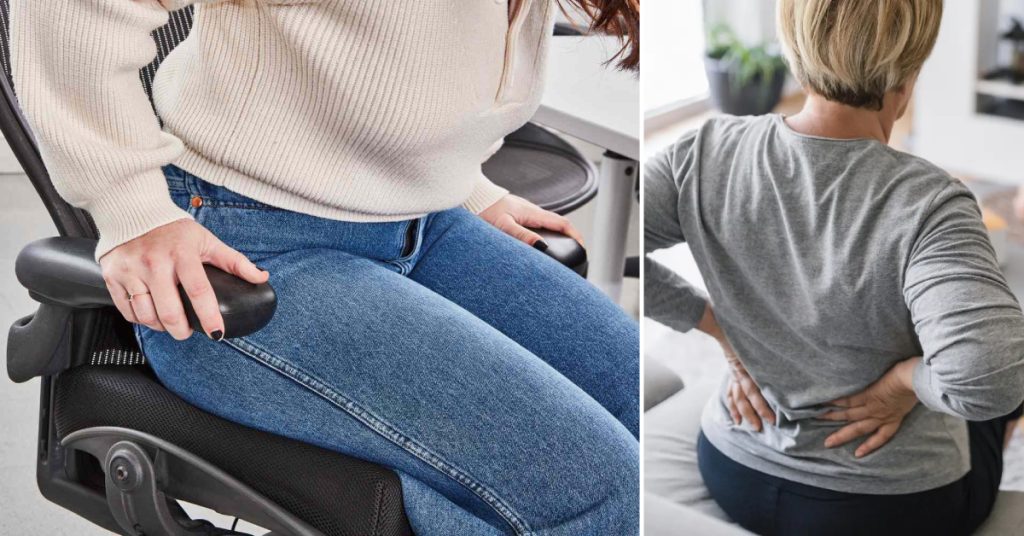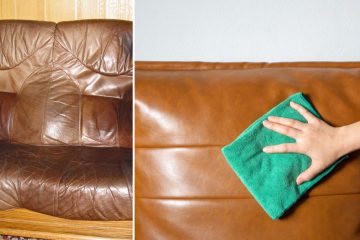Recovering from back surgery can be a long process. While rest and limited activity may be part of the initial recovery instructions from your doctor, learning how to resume normal daily living patterns and routines is also very important. One of the everyday activities that patients usually have questions about after back surgery is sitting properly in a chair. Sitting puts pressure on the spine, so how to sit in a chair after back surgery is important to avoid strain and support healing. This guide covers tips and suggestions for how to sit in a chair after back surgery.

Key Takeaway
Recovering from back surgery requires strategic chair sitting. Choose a supportive chair, maintain proper posture, use a footrest if needed, avoid twisting motions, take regular breaks, and let pain guide you.
6 Authoritative Tips for How to Sit in a Chair After Back Surgery
Here are six tips for how to sit in a chair after back surgery:
Tip 1: Choose a Supportive Chair
The type of chair you sit in after back surgery should offer ample support. Soft, cushiony chairs may seem more comfortable, but they often result in poor sitting posture as you sink into them. A better option is a firm, supportive chair. Here are some chair features to look for:
- Good lumbar support: Chairs with an area of prominence projecting forward in the lower back region help maintain the spine’s natural lumbar curve while sitting upright. Lumbar cushions can also be added if your chair lacks built-in support.
- Armrests: Having armrests on a chair provides an area to rest your arms. They also give you an assistive surface to help push yourself up from the seated position.
- Adjustable height: Chairs that allow you to alter the height enable your feet to rest flat on the floor with thighs parallel to it. This takes the pressure off the lower back.
- Cushioned seat: Well-padded chair seats enhance comfort, especially if sitting for longer periods. Just avoid cushions so soft they cause you to sink into the chair.

Tip 2: Maintain Proper Posture
It’s not just about the chair itself but also how you sit in that chair that’s important after back surgery. Be mindful of your posture every time you sit down.
- Sit upright without hunching or slouching. Keep your ears, shoulders, and hips aligned vertically so your head remains centered above your torso.
- Tuck your chin in slightly and keep your chest open instead of caving inward. This helps support the natural curves of your spine.
- Have both feet resting flat on the floor about hip-width apart. For proper alignment, your knees should sit just a little higher than the level of your hips.
- Distribute your weight evenly by centering your sitting bones on the chair seat. Avoid leaning to one side.
- Check-in periodically with posture self-assessments. Make small adjustments as needed.
Tip 3: Use a Footrest if Needed
Some chairs may be too high for you to rest your feet flat, resulting in your legs awkwardly dangling instead. Using a footrest or small footstool enables you to support your feet and removes tension placed on your back from this misalignment.
Shop for an adjustable footrest if available so you can modify the height as needed. Even just a thick book or a small box would work in a pinch to prop your feet up.
Tip 4: Avoid Twisting Motions
When reaching for items located beside or behind your chair, refrain from twisting your torso to get them. Twisting places rotational forces on your spine which could pull at healing tissue and possibly cause pain.
Instead, position frequently used items within close reach in front of you. For items located farther away, stand up to retrieve them, taking care not to bend or twist your back. Or, scoot the chair and pivot your whole body all at once to turn sideways or backward.

Tip 5: Take Regular Breaks
While rest is important after back surgery, too much sitting can also stiffen up your back. Get into the habit of taking regular standing and movement breaks every 20 to 30 minutes throughout the day.
Gently stretch side to side, walk around the room, march in place, or do some upper body movements with your arms during those intervals. Don’t ignore any sense of fatigue or discomfort—listen to the signals from your body.
Tip 6: Let Pain Be Your Guide
Some mild soreness or tension is expected while you recover from back surgery. However sharp or intense pain that starts suddenly is your body’s warning sign to stop what you are doing.
If you feel significant pain come on when sitting, change positions, or get up from the chair right away. Note what aggravated your symptoms so you can avoid those motions or positions in the future. Keep your surgeon informed of pain that persists or progressively worsens.

The way you position yourself when sitting during back surgery recovery does matter. Being mindful and deliberate about your posture goes a long way toward allowing your back to heal while still permitting you to resume seated tasks and activities. Just take it slow and let discomfort be your guide as your ability to sit improves day by day.
You Can Check It Out to Sit on Emsella Chair.
FAQs About How to Sit in a Chair After Back Surgery
Is It OK to Sit in a Recliner After Back Surgery?
Yes, it’s generally okay to sit in a recliner after back surgery. Still, it’s important to maintain proper posture, move gradually, limit sitting time, use a supportive recliner, and monitor any discomfort. Always consult your doctor for personalized advice based on your specific recovery needs.
What Kind of Chair Should You Sit in After Back Surgery?
After back surgery, choosing a chair that provides adequate support and promotes proper posture is important. Consider options such as the ProHeal Foam Geri Seat Cushion and the Lumex 3-Position Medical Recliner, which offer excellent support, pressure relief, and therapeutic benefits. When selecting a chair, prioritize features such as adjustability, comfort, durability, and safety to ensure a conducive recovery environment. Always consult with healthcare providers for personalized recommendations based on specific recovery needs.
What is the Best Position to Sit After Lumbar Surgery?
The best position to sit in after lumbar surgery is a semi-reclined posture, ideally at approximately 135 degrees, with proper support for the lower back using a cushion or lumbar roll. Additionally, keeping the feet flat on the floor or a footrest can help reduce strain. It’s essential to avoid prolonged sitting and take regular breaks for walking and stretching. Always seek personalized advice from healthcare professionals to ensure the most suitable sitting position for your post-surgery recovery.
Is It Better to Sit Up or Lay Down After Back Surgery?
After back surgery, it’s beneficial to find a balance between sitting up and lying down. Sitting up can aid in lung function, everyday activities, and social interaction while lying down alleviates pressure on the spine and supports the healing process. It’s important to alternate between the two positions and incorporate regular movement to prevent stiffness and promote circulation. Always consult with healthcare providers for personalized recommendations based on individual recovery needs.
Conclusion
Learning how to sit properly in a chair after back surgery is vital for recovery. As outlined in this guide on how to sit in a chair after back surgery, choosing supportive seating and maintaining an upright posture are keys to avoiding strain. By selecting a firm, stable chair and periodically taking standing breaks, you allow your spine the rest it requires to heal post-surgery. Listening to warning signs from your body also prevents aggravating injuries.
With some adjustments and awareness of positioning, the simple act of sitting can be made less stressful on your recovering back. Be patient—it takes time to regain the ability to sit without discomfort or limitations after surgery. Focus on incrementally progressing how to sit in a chair after back surgery in ways that feel right for your body.


